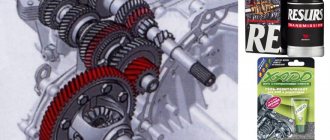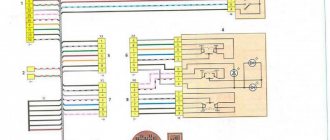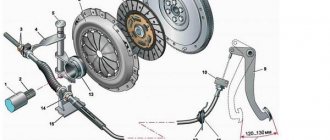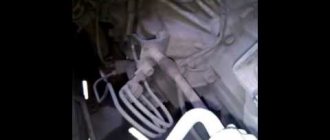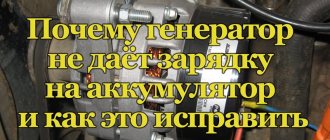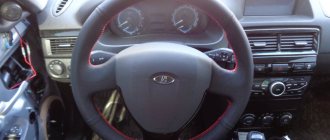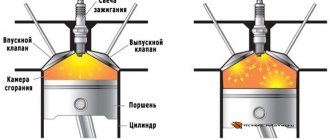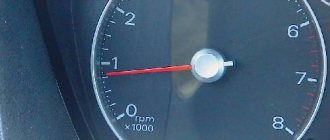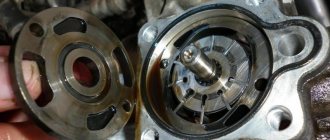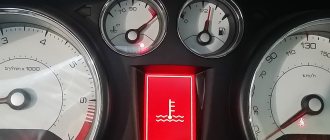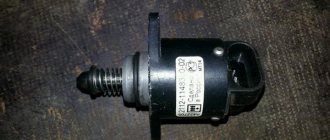Rate this post
The domestic small-class SUV Lada Niva, or Lada 4×4, or simply VAZ-2121 has been produced by the Tolyatti automobile plant for more than four decades. The model is in high demand not only among Russian car enthusiasts, but also among drivers in many other countries. The increased interest in the car is due to its uniqueness: an all-metal body instead of a classic frame structure, all-wheel drive with a center differential. Previously, few cars could boast of such a design, and those that were produced with such a transmission scheme were, as a rule, much heavier, larger and several times more expensive.
Throughout its history, the model was equipped with a manual transmission. Initially it was a manual transmission-4, since 1995 the SUV engine has been combined with a five-speed gearbox labeled VAZ-21214, which is actually a manual transmission unit-21213 adapted for 1.7 and 1.8 liter injection engines. In 2013, the mechanics underwent major changes and received a new name 21214M . However, along with the appearance of the new gearbox, constant conversations arose among car owners about where the howling and hum from the transmission on the Lada Niva comes from. Let's look into this issue further.
Howl and hum from the transmission on Lada Niva: we figure out what the problem is and how to fix it
The domestic small-class SUV Lada Niva, or Lada 4×4, or simply VAZ-2121 has been produced by the Tolyatti automobile plant for more than four decades. The model is in high demand not only among Russian car enthusiasts, but also among drivers in many other countries. The increased interest in the car is due to its uniqueness: an all-metal body instead of a classic frame structure, all-wheel drive with a center differential. Previously, few cars could boast of such a design, and those that were produced with such a transmission scheme were, as a rule, much heavier, larger and several times more expensive.
Throughout its history, the model was equipped with a manual transmission. Initially it was a manual transmission-4, since 1995 the SUV engine has been combined with a five-speed gearbox
labeled VAZ-21214, which is actually a manual transmission unit-21213 adapted for 1.7 and 1.8 liter injection engines. In 2013, the mechanics underwent major changes and received a new name 21214M
. However, along with the appearance of the new gearbox, constant conversations arose among car owners about where the howling and hum from the transmission on the Lada Niva comes from. Let's look into this issue further.
Transfer case noise
Post by Kolebon » Feb 22, 2012, 10:15 pm
Post by Vovchik » February 22, 2012, 11:05 pm
Post by tatarin545 » Feb 22, 2012, 11:11 pm
He disappeared somewhere
Tatar is not a nationality, Tatar is a profession.
I am slowly looking for an engine block or the 2130 engine itself. 42-tooth RK gear, inexpensive! Niva Fora for experiments, can be written off!
Post by Kolebon » Feb 22, 2012, 11:41 pm
Post by tatarin545 » Feb 22, 2012, 11:54 pm
Tatar is not a nationality, Tatar is a profession.
I am slowly looking for an engine block or the 2130 engine itself. 42-tooth RK gear, inexpensive! Niva Fora for experiments, can be written off!
Post by Kolebon » Feb 22, 2012, 11:58 pm
Post by tatarin545 » Feb 23, 2012, 00:12
Tatar is not a nationality, Tatar is a profession.
I am slowly looking for an engine block or the 2130 engine itself. 42-tooth RK gear, inexpensive! Niva Fora for experiments, can be written off!
Post by Kolebon » 23 Feb 2012, 00:14
Post by YVAN » Sep 15, 2013, 12:23 pm
Post by rendevor » Sep 15, 2013, 1:59 pm
Post by Alexey 30 » Oct 10, 2013, 10:09 am
Post by Anton » Oct 10, 2013, 11:09
Turn off the center differential lock (small lever away from you).
Posted by marselle » Oct 30, 2013 3:38 pm
Posted by marselle » Nov 13, 2013, 11:00 pm
Post by ivm53 » April 25, 2015, 4:08 pm
Post by Allbatross88 » 12 Aug 2015, 15:00
Post by Captain » 12 Aug 2015, 15:33
The howl of the transfer case
The howl of the transfer case
Post by Leon71 » 07 May 2014, 22:31
Re: Transfer case howl
Post by Sash » 07 May 2014, 23:15
Re: Transfer case howl
Post by DimZar » 08 May 2014, 05:35
Re: Transfer case howl
Post by Sash » 08 May 2014, 07:01
Re: Transfer case howl
Post by Sash » 08 May 2014, 12:29
Re: Transfer case howl
Post by DimZar » 08 May 2014, 20:18
Re: Transfer case howl
Post by Leon71 » June 14, 2014, 10:59 pm
Re: Transfer case howl
Post by Sash » 15 Jun 2014, 08:36
Re: Transfer case howl
Post by DimZar » June 15, 2014, 11:51 am
Re: Transfer case howl
Post by Leon71 » June 17, 2014, 10:52 pm
Re: Transfer case howl
Post by Slava N » June 18, 2014, 10:49 am
Re: Transfer case howl
Post by Leon71 » June 18, 2014, 10:45 pm
Re: Transfer case howl
Post by Leon71 » Aug 17, 2014, 8:25 pm
Tips for owners
To make driving your car comfortable, read some important points:
- The usual, standard arrangement of the front and rear handles is forward and backward, respectively. Movement in this mode can and should be carried out in areas characterized by even and smooth surfaces.
- Locking the differential by switching the front handle to the rear position is best on roads characterized by increased slipperiness. This measure will give Niva stability. It is worth understanding that after overcoming the problem area, the handle will need to be returned to its original position.
- As noted earlier, downshift should be activated before a potential obstacle, but not while the car is already stuck.
- It is worth understanding that activating the lock when the vehicle is stationary is sometimes impossible, even if the clutch is depressed. This may be caused by the clutch teeth hitting the gear teeth. In this case, you can try to activate the lock by starting to drive slowly and make a slight turn. If problems arise with disabling the lock, it is recommended to perform the same procedure with the clutch depressed and the steering wheel slightly rocked.
Also interesting: Tuning a Niva 4x4 with your own hands: updating the interior of the Lada VAZ-2121
Do-it-yourself gear shift assembly adjustment
To correctly adjust the gear selection mechanism you will need a 13 key
Sequencing:
- We start the engine, engage 1st gear. As soon as the car starts to move, we stop and turn off the engine. In this case, we leave the first gearbox speed in the ON position. We put the car on the handbrake and anti-rollbacks.
- We loosen the coupling bolt of the clamp securing the connecting rod of the gearbox under the body. For ease of work, you can use a lift, overpass, pit or jacks.
- We move the plastic traction lock located in the passenger compartment all the way to the extreme left position.
- Then we fix the loosened bolt of the mounting clamp back.
You can also try one more method to eliminate rattling and play in the gearbox handle: using a “13” wrench, you need to tighten the lever fastening nut until the axial play is eliminated.
The lever nut must be tightened to a torque of 24.5 Nm (2.5 kgfm).
If, after the adjustment has been made, the same difficulties with gear shifting and vibration remain, this means that this unit is worn beyond the permissible norm and needs to be replaced.
Repairing faults and adjusting the VAZ-2123 steering gear
Bleeding and adjusting the Chevrolet Niva clutch: step-by-step instructions
How to repair a Chevrolet Niva transfer case with your own hands: detailed disassembly instructions
Removing the Niva transfer case
To repair the transfer case on a VAZ 21213 (21214), the unit must first be removed. We carry out removal in the following order:
- in the cabin we dismantle the plastic lining of the gearbox and gearbox levers;
- unscrew the knobs of the transfer case shift levers, remove the casing under them;
- disconnect the speedometer cable, for RK 21214 you will need to additionally disconnect the speed sensor;
- we unscrew the bolts with nuts securing the elastic coupling of the front and rear propeller shafts; in order to remove the bolts, the cardan shafts must be turned - they are removed one at a time in one specific position of the shaft;
- We install a jack (or other support) under the transfer case and mark the places where the side supports of the RC were attached. This is done in order to minimize the alignment of the transfer case during installation;
- unscrew the 4 nuts securing the gearbox to the gearbox;
- unscrew the 4 fastenings of the RC supports to the car body;
- Now all that remains is to dismantle the transfer case.
Vibration
Vibration in the body is the main “disease” of the Niva; it often occurs due to improper alignment of the transfer case. Most often, vibration occurs on VAZ 21213/21214 cars, since the LCD is mounted only on two supports on the sides of the body; on the Chevrolet Niva, the transfer case is already installed on three supports. But before you start adjusting the position of the transfer case, you should check the condition of other parts of the chassis - vibration can also occur for other reasons:
- driveshafts are poorly secured;
- unbalanced wheels;
- there is play in the cardan crosspieces (vibration is especially affected by play in the rear driveshaft crosspieces);
- The vibration comes from the engine itself.
Vibration when starting off on a Niva can also occur for the following reasons:
- the mounting supports of the transfer case have become loose;
- The rubber on the RK supports themselves broke.
Video - Do-it-yourself disassembly of Niva 21214 transfer case
Model VAZ-21213 is an all-terrain passenger car with permanent all-wheel drive and differential lock. Brand 21213 is a restyled version of the first VAZ SUV, VAZ-2121. RK Niva 21213 has three gears:
- the first - with a gear ratio of 1.2;
- the second, lowered – with the number 2.135;
- neutral
21213 is equipped with 4-speed and 5-speed gearboxes, and when the first speed of the transfer case is turned on, the car operates in standard mode, the gear ratios in the transmission are from 5-speed. The checkpoints are as follows:
- 1 – 4,4;
- 2 – 2,52;
- 3 – 1,63;
- 4 – 1,2;
- 5 – 0,98.
When you turn on the second position of the transfer case lever (reverse position), the gear ratios change (lower):
- 1 – 7,83;
- 2 –4,48;
- 3 – 2,90;
- 4 – 2,14;
- 5 – 1,75.
On ordinary roads, the transfer case is always in first gear, the transfer case control lever (reduction gear) is pushed forward. The neutral gear of the RK disconnects the transmission, and in this position the car does not drive; there is also a neutral in the gearbox.
Motorists often ask the question: why is neutral gear needed in a transfer case? The neutral is used when connecting additional units to the transmission, for example, a mechanical winch; in this case, a power take-off must also be installed.
On Niva cars (with the exception of Chevrolet Niva) two main types of transfer cases are used:
- 21213 (modifications 21213-1800020-01 and 21213-1800020-02):
- 21214 (modifications 21214-1800020-01, 21214-1800020-02, 21214-1800020-10).
The transfer cases have almost the same design among themselves - the RK 21214 additionally has a speed sensor drive.
The transfer case of the VAZ 2123 car has fundamentally the same device as unit 21213/21214, but in the Chevy Niva:
- different control mechanism (with one lever);
- an additional support was installed (on a simple Niva the RK is mounted on two supports, on a VAZ 2123 car - on three supports).
The transfer case is mounted on all vehicles with all-wheel drive on all wheels.
The principle of operation is as follows. The drive shaft (main) transmits torque from the gearbox transmission mechanism mechanically to the transfer case.
Next, the torque is transferred to a special center locking differential, which distributes it between the corresponding axles. The amount of distribution depends on the type of differential. If it is symmetrical, then this force will be distributed in equal proportions, but if it is not symmetrical, then the moment will be distributed in certain proportions.
For the most efficient operation of the Niva's all-wheel drive, a center differential lock is used. This phenomenon is usually understood as the complete or incomplete disengagement of the differential and ensuring the tightest connection between the axles. Thus, slipping of individual axles is eliminated if one pair of wheels rests against some obstacle.
Methodology for determining the causes of vibration of the transfer case and body floor in the area of the front seats
First, note at what speed the transfer case vibration occurs, then begin to determine the causes of the vibration.
Test 1
Place the transfer case and gearbox levers in neutral and start the engine.
Set the engine speed equal to the vehicle speed at which the vibration occurred.
If vibration persists when the vehicle is stationary, you should check the fastening and condition of the engine mounts, as they are the cause of the vibration.
Test 2
If vibration is not detected during test No. 1, then set the transfer case levers to the neutral position, start the engine, engage direct gear in the gearbox and set the engine speed corresponding to the vehicle speed at which the transfer case vibration occurred.
If vibration is observed with a stationary car at this crankshaft rotation speed, then its cause is a malfunction of the intermediate driveshaft (imbalance, bending of the fastening bolts or elastic coupling flange, jamming in the universal joint).
Test 3
If no vibration is detected in tests 1 and 2, proceed to test 3.
Accelerate the vehicle to a speed where vibration occurs and place the transfer case and gearbox levers in neutral.
If the vibration persists, it is caused by a malfunction of the front or rear driveshafts, imbalance, jamming of the universal joints or imbalance of the center differential.
Before centering the transfer case, we check the condition of the power unit supports and the correct installation (the centering washers of the engine mounts must fit into the corresponding holes in the side brackets).
We install the transfer case on the car without fully tightening the nuts securing the brackets for its suspension.
By moving the transfer case in the longitudinal, transverse and vertical directions (tightening or loosening the nuts of its fastening), we achieve a minimum and uniform gap between the flanges of the intermediate shaft and the drive shaft of the transfer case (the flanges must be at the same level and parallel to each other).
We fill the gap between the body floor and the supports with adjusting shims and align the centering belts of the flanges, slightly moving the transfer case forward (by the amount of the gap between the flanges).
Finally tighten the nuts securing the transfer case supports.
When replacing a transfer case or changing a four-speed gearbox to a five-speed one and vice versa, as well as when the rear engine mount settles, causing vibration of the transfer case, it is necessary to select and install a new thickness of gaskets 3 (Fig. 1).
Repair of intermediate shaft Niva VAZ 21213, 21214, 2131 lada 4×4
We mark the location of the coupling relative to the flange,...
| ...as well as the number and location of balancing washers relative to the coupling. |
| While holding the bolts from turning with a 19mm wrench, use a head of the same size to unscrew the three nuts. |
| Disconnect the coupling and flange. |
| By turning the hinge, remove the bolts from the holes in the elastic coupling flange. |
| Using a screwdriver, remove the plastic plug. |
| Squeeze the clamp with sliding pliers and remove it. |
| We use a screwdriver to move the plastic casing... |
| ...and remove the rubber protective cover from the constant velocity joint housing. |
| We place the hinge body on the open jaws of the vice and, striking through a soft metal drift at the end of the elastic coupling flange, knock out the flange. |
| Separate the hinge and flange. |
| Pull the plastic casing off the rubber boot. |
Pulling off the rubber boot...
| ...we compress the clamp with sliding pliers and remove it. |
| Remove the rubber protective cover. |
| Using a screwdriver, remove the hinge retaining ring. |
Disassembling and assessing the condition of the hinge parts are similar to the corresponding operations described in the chapter Front wheel drive.
We assemble the intermediate shaft in the reverse order. We put 20 cm3 of CV joint grease into the rebuilt or new hinge. Before connecting the hinge to the flange of the elastic coupling, install a small clamp of the rubber protective cover.
| We press the hinge onto the flange, striking through a piece of pipe onto the hinge holder. |
| Before installing the rubber coupling, we compress it with a clamp. |
We place the used coupling according to the marks relative to the flange. We place the previous balancing washers according to the marks relative to the coupling. When installing a new coupling, the shaft assembly may need to be balanced.
Removing the howl and hum
We will assume that we have dealt with the vibration, but an equally significant problem remains - how to remove the howling of the transfer case on the Niva. Vibrations of the mechanism are not always the only reason for the appearance of extraneous irritating sounds. And the characteristic noise of the transfer case, alas, is one of the “trademark” shortcomings of one of the best domestic SUVs.
The first thing you should pay attention to is the levers. It is better to immediately replace them with silent ones - with anti-resonance bushings inside
They won’t eliminate all the noise, but they will definitely extinguish some of it.
Silent transfer case levers NIVA 2121 black Art. SV-21-18040401400.00-+ Buy
- The result will be even better if you install a small-module transfer case - with front and rear covers equipped with double-row bearings. In 2010, AVTOVAZ introduced new double-row bearings for output shafts in order to get rid of backlash and runout, as well as extend the life of the seals and, in general, increase the reliability of the mechanism. Here logic is man’s friend: less shaking and hesitation means higher service life and reliability.
Transfer case (2-row bearing) 21213 Art. 21213-1800020-0115000.00-+ Buy
We study problems and repair methods.
Any car owner definitely doesn’t need to be told why howling and humming are bad. Vibration of the transfer case on a Niva at low speed is quite common. The driver, of course, gradually gets used to many extraneous sounds in the car, but the noise level is high enough to make it impossible to carry on a conversation with passengers while traveling. Due to excessive noise pollution, you will inevitably have to deal with the problem.
Sources
- https://motorltd.ru/snyatie-i-tsentrirovanie-razdatochnoy-korobki-vaz/
- https://www.vazzz.ru/vaz-21213-razdatka-ustrojstvo-shema-tsentrovka-snyatie/
- https://avto-idea.ru/remont/remont-razdatki-na-nive-21213-kak-ottsentrovat/
- https://AutoFlit.ru/2260-kak-otcentrovat-razdatku-na-nive-sposob-dlya-korotysha-i-shevrole.html
- https://NewNiva.ru/kak-ustranit-vibratsiyu-na-nive-21214.html
[collapse]
hum and howl when moving in tension | Topic author: Liane
Dear friends! My father bought a Chevrolet Niva in January 2022, before that he only drove right-handed cars. Before buying, we took it for a test drive, and there seemed to be no noise, but when we brought ours, until we arrived from the car dealership, we didn’t seem to notice such obvious noises, especially since we were driving no more than 40 km/h. Then, over time, we began to drive faster and noticed a howl and hum emanating from either the roofing felt box or the transfer case. We changed all the oils completely and everywhere, in general, everything that could be lubricated))! And it didn't help! The howling remained the same starting from 50 km/h and then increasing, and the most important thing is that the intensity of the sound increases when driving under tension, as soon as you increase the gas, everything goes away! Yes, and in the first 2 gears, the hum is present, but very weak. The car's mileage today is only 4 thousand/km.
Please tell me what this is and how to deal with it! Thank you in advance!
Sergey (Ragnar) Sergey, this is normal. As all the seals are replaced and the mechanisms are ground in, the noise will go away
Sergey (Ragnar) Thanks Sergey!
Andrey (Jasmeen) I had such a problem, at first it hummed slowly, then stronger and stronger, the hum came from the front axle gearbox, I changed the oil, it didn’t help, in the end it jammed, I had to change the gearbox, the hum disappeared!
Sergey (Ragnar) Andrey, I also had something buzzing in third.
I drove 24 thousand, but now it seems not.
Vasily (Marah) I had a hum starting from 60 km/h. They climbed a hundred and listened, they said that the handout was good. I spent a whole week thinking about what to do, replace it with a new one or remove it and give this one for repair. The car is new, produced in 2022. A friend works in a service center and advised me to change the oil in the transfer case to the Russian mineral w85-90, and add an anti-noise additive, like after 300 km all the noise will go away... I changed it, at the same time changed the axles, drove 300 km, nothing was missing, and now I’m driving like this then one day and suddenly it suddenly dawned on me that the hum was coming from the ROOF RACK)))) I removed the trunk and everything went away.
Alexey (Chalissa) guys, such a problem, I bought a Niva, it means there is a howling, and as the speed increases, the howling increases, as soon as I press the clutch the howling disappears, it comes from approximately under the gearbox lever, I looked around a bunch of frooms but found nothing, maybe you what do you suggest?
Dmitry (Sancho) Or maybe this is a feature of our Lada cars? It is very difficult to judge what your howl is. Moreover, the transfer case howls due to its design feature. Comparing the noise level with foreign cars is the same as driving comfort between an UAZ and a gelding. Ride other tires and compare the noises.
Igor (Annig) Alexey, what was not determined (otherwise it’s the same garbage)
Irinka (Artemios) Niva 2022 Mileage 30,000. Transmission filled with Liquid Moly - Everything is just super. Niva 2022 Mileage 8,000 Filled in trans. Liquid Moly. Vibration, noise and a terrible rumble began. 1 Changed the oil (drained CLEAN oil) in the gearbox and RC with Champion mineral water - NO changes. 2 I started changing the oil in the rear gearbox and drained the BLACK oil. Filled with clean and fresh oil. No changes. The vibration has increased! Guys, tell me what to do and what to do
Ivan (Vitthala) Hello guys, about the hum. I've already driven 270,000 on the shnivy, the hum has remained the same. What to do next?
Oleg (Sonoma) Sell and buy new
Marina (Landen) Steam locomotives hum; and the wind howls
Vasily (Marah) humming noise, from 10 km/h. replaced under warranty. humming and under tension and when you accelerate and go on gas at 4th 50 km/h and above. when releasing the gas there is no hum... like on a trolleybus in Soviet times.
Evgeny (Budd) Vasily, what was replaced under warranty? Gearbox, transfer case? I have the same trolleybus...
Vasily (Marah) The transfer case was replaced. The noise remained as it was. The howl of the Razdatka was added. So that…
Evgeny (Budd) I see, I’ll try to change the gearbox, but the diagnostics have no result at all. It only howls under load directly on the road..
Sergey (Ragnar) nothing will go anywhere) there will be a howl and it won’t go anywhere.!!!
Evgeny (Budd) Sergey, it howls and howls) it wouldn’t fall apart on the move) if I knew for sure where it was normal and where it was faulty... there are fields that howl! 10-15 percent)
Sergey (Ragnar) Evgeniy, when accelerating from 60 to 75, it starts whining and subsides, it’s like this in the transfer case almost from new, about 3000 km away, it started now at 52,000 it’s all the same.. I don’t worry about driving
Tags: How to determine whether a bridge or transfer case is humming in a field
General topic about sounds from the gearbox (box)
Reg.: 12/06/2004 Threads / Messages: 627 / 51712
Reg.: 08/07/2006 Threads / Messages: 1 / 145 From: St. Petersburg, Komendantsky airfield Age: 50 Car: Chevy Niva GLS, 2013
The master said that most likely it was the input shaft bearing, but this is a disease of all boxes on the classics and in his memory only one and a half times because of this the box eventually fell apart. And to repair half a box, I hardly need it (in the sense of not him, but I) hardly need it (for money, for example)
Should I insist or is it really possible to continue driving like this?
Reg.: 12/06/2004 Threads / Messages: 627 / 51712
Name: Pavel Reg.: 08/28/2006 Threads / Messages: 6 / 1040 From: Moscow, Teply Stan Age: 46 Car: Motorcycle: HONDA VFR 1200 X Crosstourer.
I have the same problem. I was driving to St. Petersburg on January 2, 2007, a squealing sound appeared, there was no reaction to pressing the clutch, I pulled the gearshift knob and the sound disappeared. Then he showed up a couple of times on the way back. The sound is synchronous with engine speed (with the clutch disengaged). It looks like the input shaft bearing is spinning in its seat. The mileage is 60 thousand, I’m thinking about gutting the box (it’s probably time) it hasn’t stopped yet.
OFF TOP: Guys were in EVERY village, back and forth. I never got caught!
Reg.: 12/06/2004 Threads / Messages: 627 / 51712
Name: Pavel Reg.: 08/28/2006 Threads / Messages: 6 / 1040 From: Moscow, Teply Stan Age: 46 Car: Motorcycle: HONDA VFR 1200 X Crosstourer.
Reg.: 05/04/2006 Threads / Messages: 9 / 119 From: Korolev, Moscow Region Age: 42 Car: was 21213; SGVN 2.4 5D manual transmission 2008
I squeal.
